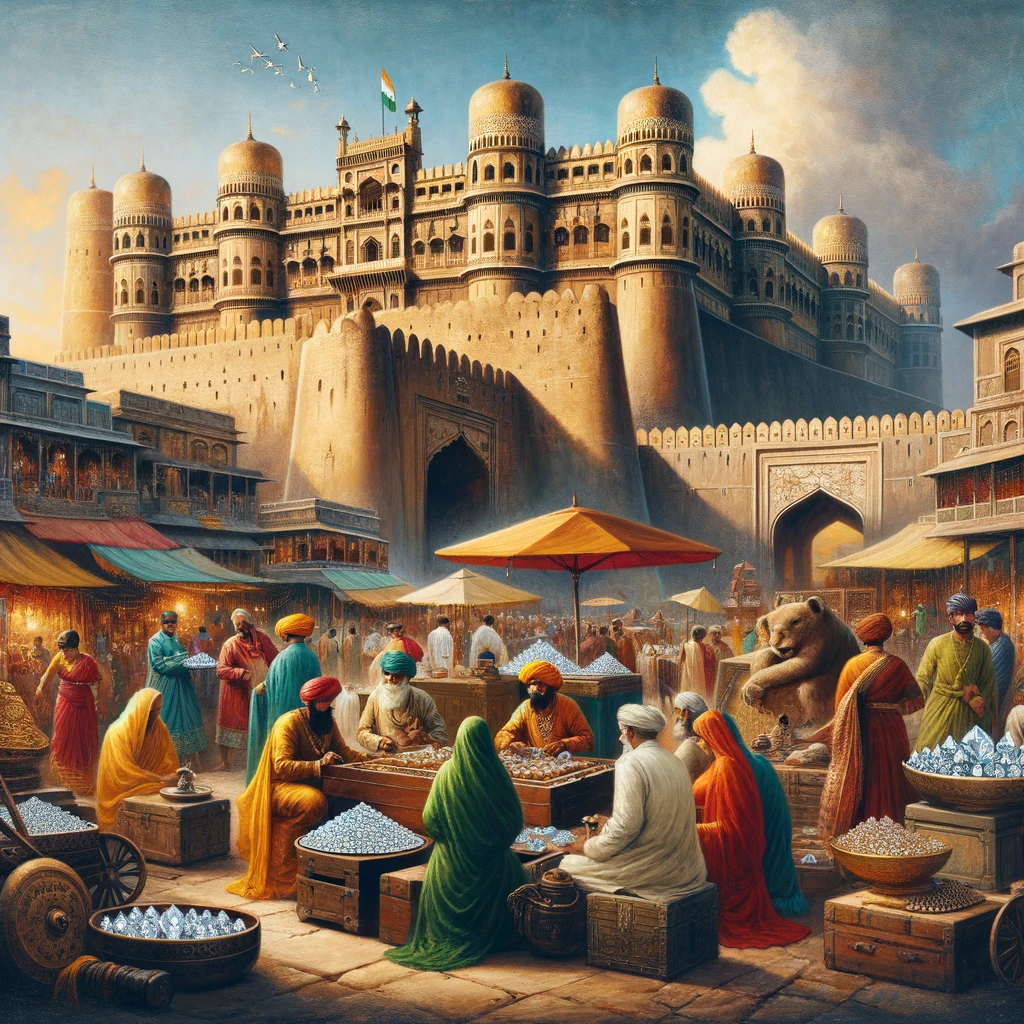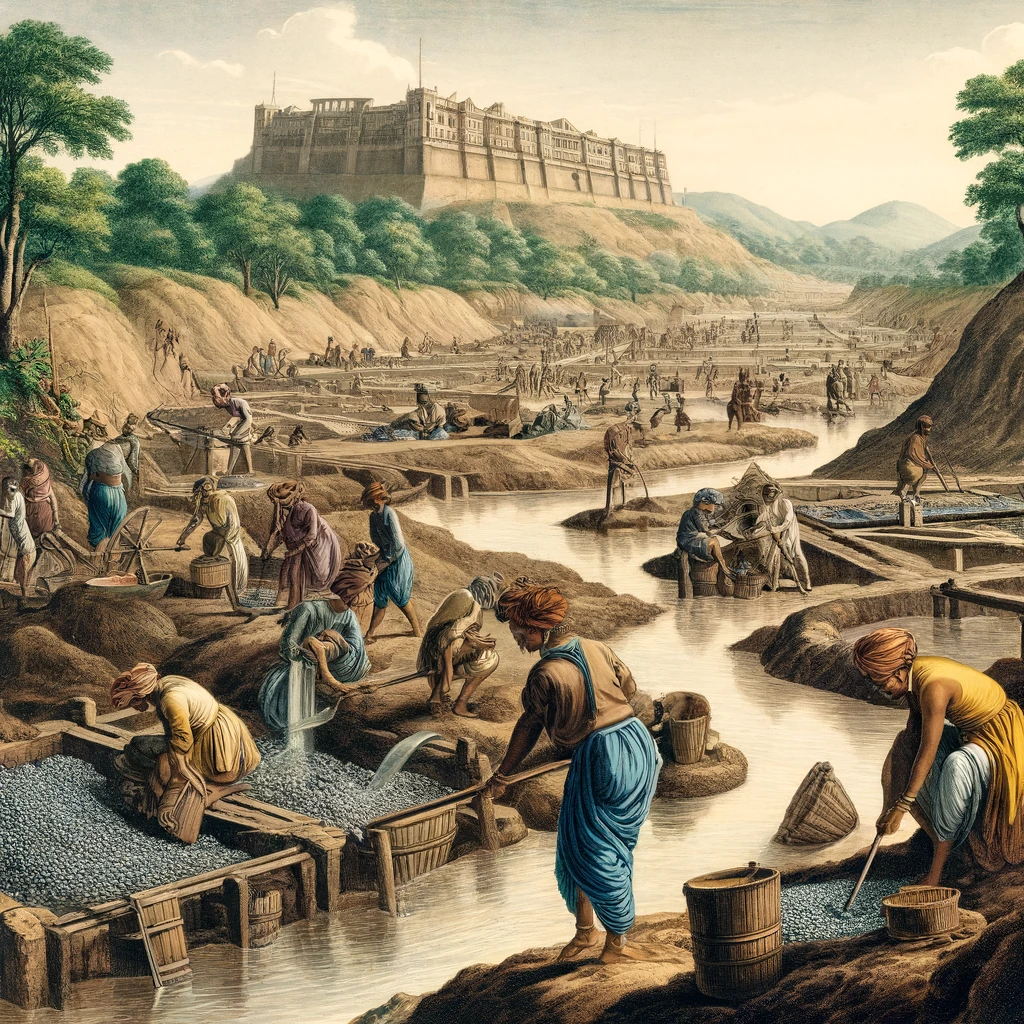The Golconda region in India is historically renowned for its diamond mines, which have produced some of the world’s most famous and coveted gems. This region, situated in what is now the modern state of Telangana and parts of Andhra Pradesh, was synonymous with vast wealth and opulence due to its rich diamond deposits. The term “Golconda Diamond” has become a byword for any diamond of exceptional quality originating from this area, and the mines themselves have a storied history that dates back to as early as the 16th century.
Early Beginnings
The exact start of diamond mining in Golconda is not well-documented, but it is known that the region was one of the earliest sites for diamond mining in the world. Historical records and references in literature suggest that diamonds were being sourced from this area at least by the 1500s, making it one of the significant early players in the global diamond trade. The richness of the region’s alluvial soil, particularly in the Krishna River valley, made it an abundant source of these precious stones.
The Mines and Their Diamonds
The mines of Golconda were not underground shafts but were rather extensive alluvial fields where diamonds were collected from the riverbeds and soils where they had been deposited. These fields were famously productive, and the diamonds extracted from them were known for their purity and size. Some of the world’s largest and most famous diamonds, such as the Koh-i-Noor, the Hope Diamond, and the Regent Diamond, are believed to have originated from the Golconda region.
The Golconda Fort
The Golconda Fort, a historic fortress in the region, became synonymous with the diamond trade, serving as the central trading hub and a vault where the diamonds were stored and guarded. The fort’s association with wealth was so prominent that it became a symbol of Golconda’s economic significance in the diamond trade.

An artistic rendering of the Golconda Fort, portrayed as a central hub for the diamond trade. The scene captures traders and nobles in a vibrant marketplace setting, with the majestic fort overseeing the bustling activity, reflecting the cultural and economic vitality of Golconda during its diamond trading era.
Impact on Economy and Culture
The diamond mining industry in Golconda significantly impacted the Indian subcontinent’s economy and culture. It attracted traders from across the globe, including Europeans, Persians, and Arabs, who came to trade in spices, textiles, and diamonds. The wealth generated from this trade helped to fund the opulent lifestyles of the Indian royalty and the construction of lavish architectural projects. The diamonds from Golconda were also sought after for their supposed mystical properties and were often owned by royalty and nobility as symbols of divine right and power.
Decline and Legacy
By the mid-18th century, the mines began to deplete, leading to a decline in their productivity. Additionally, the discovery of diamond mines in Brazil in 1725 shifted the center of the diamond trade westwards, further contributing to the decline of Golconda as a key player in the global diamond market. However, the legacy of the Golconda diamonds continues to live on through the gems that remain part of crown jewels and museum collections around the world.
Today, the story of Golconda’s diamonds encapsulates a fascinating chapter in the history of gem mining, reflecting the interplay between natural resources and human culture across centuries. The tale of these extraordinary gems from the Golconda region continues to enchant historians, gemologists, and enthusiasts alike.










